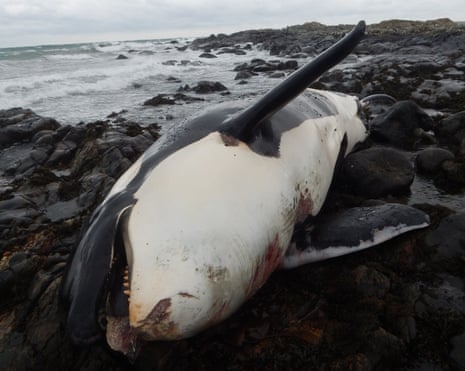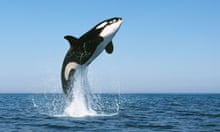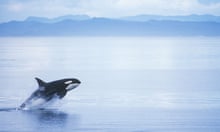One of the highest concentrations of toxic pollutants ever recorded in a marine mammal has been revealed in a Scottish killer whale that died in 2016.
The adult whale, known as Lulu, was a member of the UK’s last resident pod and a postmortem also showed she had never produced a calf. The pollutants, called PCBs, are known to cause infertility and these latest findings add to strong evidence that the pod is doomed to extinction.
The level of PCBs found in Lulu’s blubber were extreme at 950mg/kg, more than 100 times the 9mg/kg limit above which damage to the health of marine mammals is known to occur. A 2016 analysis showed the average concentration for killer whales in the north-east Atlantic was about 150mg/kg.
Lulu died after becoming tangled in ropes used to haul up creels, the netted cages used to catch lobsters and crabs. But Andrew Brownlow, head of the Scottish Marine Animal Stranding Scheme, said: “Given what is known about the toxic effects of PCBs, we have to consider that such a high-pollutant burden could have been affecting her health and reproductive fitness.”
Brownlow, also a veterinary pathologist at Scotland’s Rural College, said: “Lulu’s apparent infertility is an ominous finding – with no new animals being born, it is now looking increasingly likely that this small group will eventually go extinct. One of the factors in this groups apparent failure to reproduce could be their high burden of organic pollutants.”
The examination of Lulu found she was at least 20 years old, well above the age of sexual maturity, which ranges from six to 10 years old. However, analysis of the ovaries shows she never bore a calf. The entire pod may have been left barren, as no calf has ever been seen in the 23 years the group have been monitored.
PCBs were used for decades in electrical equipment but finally banned in the 1980s after the full toxic impacts on people and wildlife were revealed. PCBs, which cause cancers and suppress the immune system, are especially harmful to top predators because they accumulate in fat up the food chain. Killer whales can live for many decades, meaning they can end up with very high levels of PCBs.
PCBs are extremely tough chemicals and do not break down in the environment. The decline in PCB levels in marine wildlife seen after the 1980s ban has now levelled off in some places, indicating that the toxic chemicals are still leaking into the oceans from inadequate waste storage sites.
“Once PCBs get into the marine environment, they are difficult if not impossible to remove,” said Brownlow. “There are still many PCB stockpiles in Europe, and it is absolutely essential that these toxic reserves do not reach the marine environment.”
Bottlenose dolphins in the north-east Atlantic have also shown both high PCB levels and low reproductive rates. Other PCBs hotspots around the world include the entire Mediterranean and the Black Sea, while specific populations suffering from PCB poisoning include belugas in Canada and polar bears across the Arctic.
In February, scientists discovered “extraordinary” amounts of PCBs had even reached the most remote and inaccessible place on the planet – the 10km deep Mariana trench in the Pacific Ocean.










